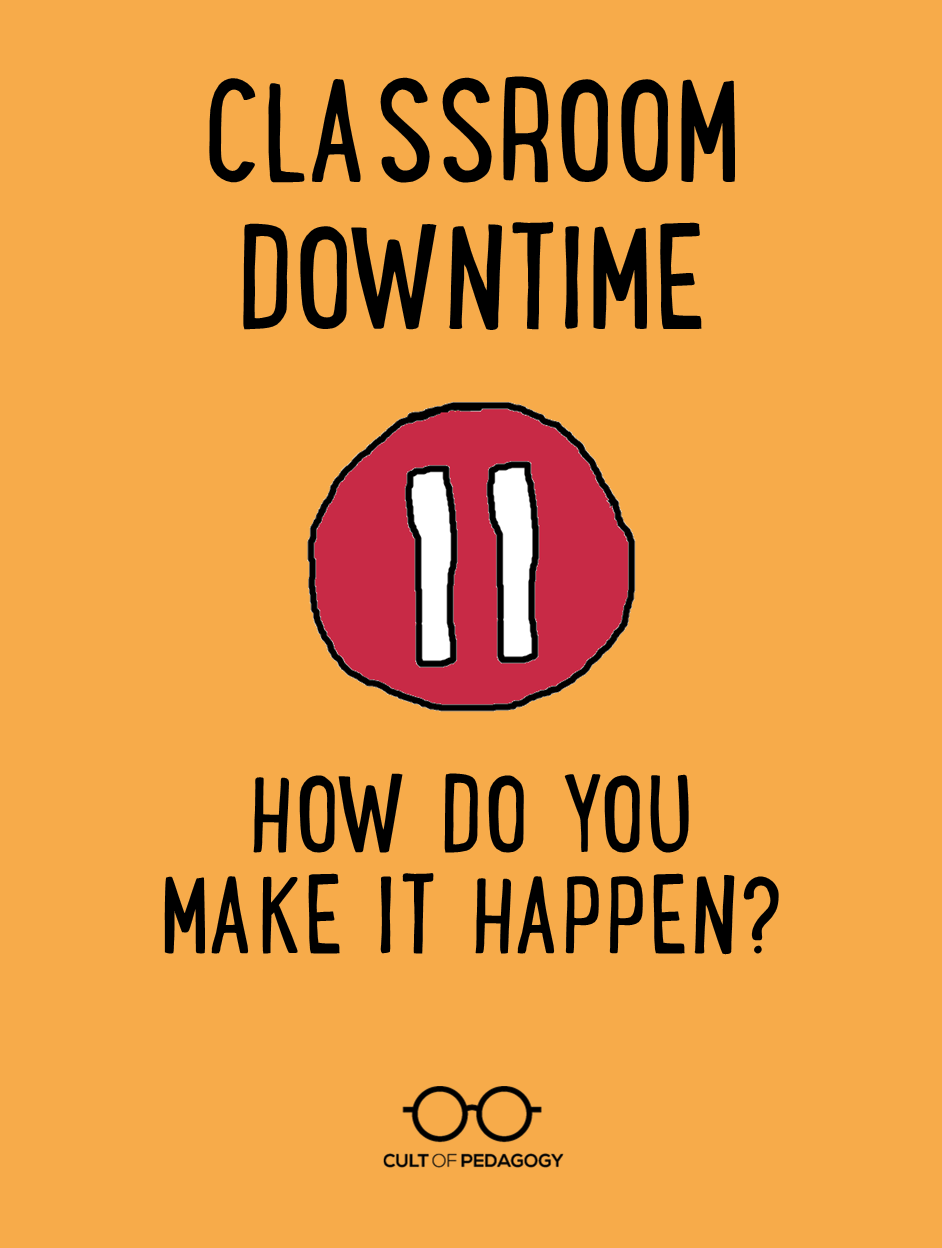Classroom Downtime: How Do You Make it Happen?

All teachers need to put their students on pause from time to time. Is it possible to do this without sacrificing learning?
Every day when I pick up my kids from school, I ask them what they did that day. Far too often, and especially near the end of last school year, I’d get this answer: “Watched a movie.”
Really? I’d say. Again?
My kids are 6, 7, and 8. I know that at this age, the chances are slim that their reporting is totally accurate, but still. It’s getting to the point where it’s every day. If they’re just going to watch movies all the time, I could do that with them at home. So why do I bother getting them up in the morning, hustling them to school on time, keeping their attendance records as clean as possible, only to have them plop on the carpet in front of the ActivBoard and watch Despicable Me for the fifteenth time? Okay, that’s an exaggeration. But that’s how it feels.
And then I think back to when I had my own classroom, when the file of papers that needed grading would bust at the seams. When the email came, reminding me of an IEP meeting I’d completely forgotten about, robbing me of my planning period yet again. A folder would land on my desk, requesting four days of class work for a sick student—and it needed to be turned in by 2:30 that day. Plans were due. Important e-mails were sliding off the visible screen of my inbox, where they would no longer get my attention. I needed a catch-up day. Bad.
And nothing worked quite as well as a movie: They would all sit at their desks, mesmerized and silent, while I plowed through my work, grading and sorting and putting everything in its place. And because I was in a middle school, I repeated this process in every class period. So with every passing hour, I found my blood pressure lowering and my love of the job returning. And at the end of the day, I could see the top of my desk, my lessons were planned weeks in advance, and I was refreshed and ready for the next day of teaching. Oh, and there was this: The day did not produce anything new to do. When my students left, I had no materials to put away, no fresh student work to respond to. It was the cleanest of slates. Plus, the kids thought I was awesome.
Now that I’m a parent, I definitely see things differently, and this article tells me I’m not alone. I do believe that if and when I go back to the classroom, I’ll be much more selective about the times when I use movies. And I’ll come up with other ways to create peace and quiet, some downtime in my room, when the kids can work independently and I can get organized. My guess is that it will involve silent reading: I’ll spend the first few weeks of school really working with them on independent reading, developing a system and creating an environment that will eventually reward me with some quiet time when I need it.
But there’s the rub: I’m not back in the classroom. I think I might suffer from the kind of amnesia that comes from elapsed time. I may have forgotten how desperate a teacher can become for a little extra time to get things done. And there’s this, too: As I write this post, all three of those precious children of mine have been placed in a technology coma, two on iPads, one watching a show. Despite my most lofty convictions of what’s right, I’m still doing it.
So I pose the question to you: How do you create downtime in class? How do you, if ever, put your students “on pause” in order to catch up on administrative tasks? Have you figured out how to make most or all of the time they spend in your class academically engaging? I think we can all agree that movies work fine on an occasional basis, but is it possible to rely too much on them? Are there more creative ways to keep kids minds engaged AND get a little time back for ourselves? Please share your ideas here so we can all learn together. ♦
To read some of the best solutions to this problem, check out John Spencer’s fantastic post, Twelve Creative Alternatives to Showing Movies Before the Break. And if you need a more big-picture solution to your time management issues, learn about the 40-Hour Teacher Workweek.